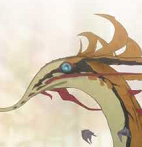Do cats and dogs actually feel affection when you treat them right or is it really just an instinct for “more food and drink” etc?
I don’t think I’ve ever seen dogs, cats and other domestic animals smile because they’re happy and show love to their owners for treating them right.
Yeah I see memes but those are either photoshopped or snapped at the perfect moment to make it look like they’re smiling.
No, only humans are capable of thought and emotion. every other animal on this planet is just running a basic logic loop and will despawn if you move more than 100 yards away from them.
They got us in the first half

I don’t think I’ve ever seen dogs, cats and other domestic animals smile because they’re happy
The dog wags it’s tail to show happiness/excitement. Come on, have you never heard about that?
“Smiling” = showing the teeth would indicate a threat of aggression.
It’s not only barring teeth, dogs also do a “submissive smile” in some cases, to show they are not a threat. Not seen much but when we got our second dog she was very insecure and “smiled” a lot. Definitely not for showing happines but I think I read our smiles have similar origins.
Do animals feel love and emotion?
Yes. Animals absolutely have emotions. In fact, many animals, like cats, are extremely emotional creatures, on account of not having as highly developed parts of the brain that deal with emotional regulation. Affection? Absolutely. Love? Yes, but not generally in the same ways as people.
Do cats and dogs actually feel affection when you treat them right or is it really just an instinct for “more food and drink” etc?
I have a little cat that adores me. He likes come right up to my face and head-butt me forcefully (a behavior called bunting) and he likes to fall asleep gazing at me. Domestic cats and dogs are social creatures. Left to their own devices, they will engage in social behaviors unrelated to survival and biology.
I don’t think I’ve ever seen dogs, cats and other domestic animals smile because they’re happy and show love to their owners for treating them right.
Oh they absolutely do smile, just differently than humans. Cats are especially subtle abd communicative in their body language. It’s also with noting that what humans think of as smiling, to most animals is an aggression display.
Yeah I see memes but those are either photoshopped or snapped at the perfect moment to make it look like they’re smiling.
Domestic dogs and cats communicate a lot with body language, the majority of it being pure emotion. Their body language, however, is different from our own. You have to meet them halfway in communication; learning to listen to what they are saying.
Funny how smiling is seen as agressive as a person who don’t show teeth when smiling
Yeah. It’s the showing teeth (or that thereof) that in many animals is a threat display. Think of it like a non-verbal way of saying “See these teeth? How’d you like them in your face? Because that’s gonna happen if you don’t step the fuck off.”
I find that my cats and dog DO smile with their mouths/faces closed when getting a particularly nice petting. It seems a bit subtle because they’re smaller than us but, rather like a little smirk (best is when my little cat gets a particularly nice nose scritching and he can’t keep his mouth closed because it feels too good and a loud purr escapes from between his little fangs).
Smiling with the mouth isn’t a universal expression, different animals express happiness in different ways
Not only dogs and cats are individuals who have their own way of showing how they feel and how much they love you.
Most people would probably switch to a vegan lifestyle if they realised how much we underestimate animals (and overestimate ourselves)
I struggle with this all the time. I hate watching cute piggy videos because I remember them next time I eat bacon.
Well, why not start with gradual changes?
If you feel bad, you already made the first step: listening to yourself because you already realised how wrong it is.
If you need motivation, watch dominion. I think it’s fair to say that people should have footage like that in the back of their mind when they want to enjoy animal products.
You might not believe me, but changing things like your diet to be free of any animal cruelty feels fucking great, and it just takes a certain amount of time to learn new recipes and then it’s just easy going.
I can help you with whatever you struggle with if you ever need some help
Thanks, I probably will change soon, but I have to convince my partner first…
Absolutely! There are studies which show that cats develop affection for their owners, and have several ways of making that affection known. Dolphins are able to feel both love and also grief and there’s a growing amount of research which shows that birds are able to feel joy, love and grief. Many animals also mate for life!
They definitely do show sympathy, sadness, fear and joy, which are unrelated to being rewarded with food and trained behaviour.
I don’t see why they shouldn’t have a full range of emotions. It seems simpler and more natural than developing a transactional response only.
The bigger question is what emotions even are. If it’s a chemical or biological reaction then it’d be weird if other mammals didn’t have about the same emotions as humans.
It’s difficult to see how an animal feels unless you know it well. I can mostly see how my own dog is doing, but I have no idea what mood a random dog on the street is in.
Neurobiologically they absolutely do. Most animals have amygdala, for starters, so they feel a lot of basic emotions. As for love, one would only need to ask whether they can do things such as produce oxytocin, recognize faces or voices, desire touch, etc.
Best answer here as it touches on inarguable facts rather than feelings. NOTE: Emotions are mainly a mammal thing, though reptiles and birds have a sort-of amygdala, not the same though.
And an interesting bit for OP: Dogs DO smile! At the least we can that we selected for more expressive facial muscles in dogs. In contrast, my pig has about zero emotional indicators, though he seems smarter than any dog I’ve met.
Dogs were shaped during the course of domestication both in their behavior and in their anatomical features. Here we show that domestication transformed the facial muscle anatomy of dogs specifically for facial communication with humans. A muscle responsible for raising the inner eyebrow intensely is uniformly present in dogs but not in wolves. Behavioral data show that dogs also produce the eyebrow movement significantly more often and with higher intensity than wolves do, with highest-intensity movements produced exclusively by dogs. Interestingly, this movement increases paedomorphism and resembles an expression humans produce when sad, so its production in dogs may trigger a nurturing response. We hypothesize that dogs’ expressive eyebrows are the result of selection based on humans’ preferences.
https://www.pnas.org/doi/10.1073/pnas.1820653116
Far more out there if you want less technical resources:
You may be interested in a paper Thomas Negal wrote about 50 years ago called “What is it like to be a bat?”
https://www.sas.upenn.edu/~cavitch/pdf-library/Nagel_Bat.pdf
It’s not just about emotional states, which we can observe the behavioral states of but don’t know what it is like to experience as other animals. It’s about experience and consciousness which I think speaks to the underlying question of when other animals experience an emotional state if we can relate it to our own phenomenology for similar appearing states.
My dog definitely loves me. I feel the love every day from her. I can feel it in my bones. That animal loves and trusts me.
Others have cited sources but yes, dogs and cats definitely feel love.
There is a whole book about this, “Dogs Never Lie About Love”, by Jeffrey Masson.
I don’t think I’ve ever seen dogs, cats and other domestic animals smile because they’re happy and show love to their owners for treating them right.
My dog “smarls” (smile+snarl) at me when I come home. We’ve taken a still photo of him while smarling and it looks horrifically vicious. It’s like a stock photo captioned “aggressive dog”. But he’s actually happy. The difference is body movement. An aggressive or dangerous dog will be very still, just showing teeth, usually growling and backs away from a threat or quickly lunge if it gets too close. A smarl is usually accompanied by a wagging tail and body wiggles and slowly approaching to get pet.
Not an easy question to answer. You should ask of them, or check the poems and songs they write.
Roses are Red,
Violets are blue,
I sniff buts,
and so do you!<Ferp>
*dog poems come with smellovision to enhance the meaning.
This really is the right answer. We dont actually know. We can attempt to translate behaviours and biological mechanisms we know from humans to animals but in the end we cant ask them so we dont know.
If emotions are defined as hormonal responses then we could say “yes”, but that would reduce human complexity to basic chemistry which is too simplistic.
With cats and dogs it’s all about the tail from what I’ve observed. They can’t really smile but their wag (dogs) or tail position (cats) convey their feelings. If your cat’s tail sticks straight up when they see you you know they have an affection towards you. Or maybe it’s food. All I know is straight up tail is a happy cat.
If it’s swishing, look out. And a dogs tail stops wagging and goes into like a prone state when they are concerned.
Yes, but not necessarily the same way we experience them. Dogs and cats don’t have the facial muscles to smile even if they wanted to and show pleasure in other ways.
Dogs are very good in “facial” expression and body language. They can also read human facial expression.
With cats I agree. Cats are assholes and should be kept outside like pigeons and rats.
Consequence of being with humans for 30,000 years. Dogs can read human tone, facial, and body language better than any other animal, including our closest relatives, chimpanzees.
I’m a cat lover. It’s true they can be assholes, but they can be affectionate as well. They’re not nearly as domesticated as dogs are since not only have we only been living around them about a third as long, but they only really started living indoors with us in the last hundred years or so. They’re semi-domesticated.







